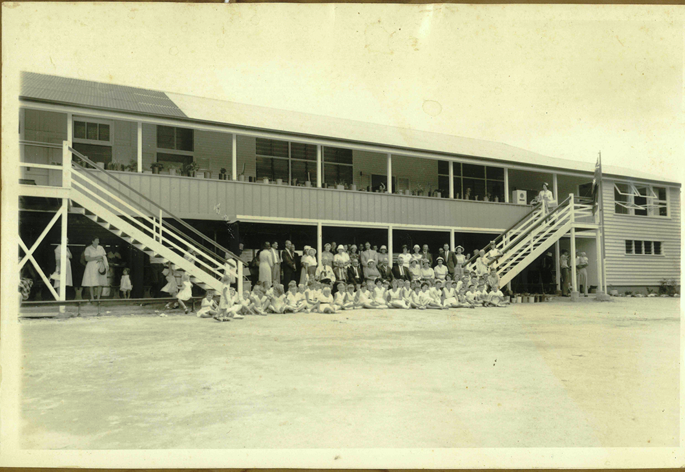The name Kin Kin is believed to come from an Aboriginal term me

aning “plenty plenty black ants," referencing a species of small black ants once common in the area. The region was likely part of the lands traversed by the Dulingbara people, of the Kabi Kabi language group, who lived in close connection with the surrounding bushland, creeks and ridgelines long before European settlement.
From as early as the 1860s, timber-getters seeking red cedar began venturing into the dense Kin Kin scrub. By 1904, a track had been cut over the range and soon after, a road was built. Within a few short years, the Kin Kin Valley was dotted with farms and family homes across areas known as Kin Kin Junction, Moran Group and Wahpunga. These small pioneering communities were determined to give their children a chance at education - each succeeding in opening its own local school by 1910.
Though Kin Kin State School was the last of the four local schools to open, its story has endured the longest. On October 18, 1916, parents and children proudly walked together to the new school site for the very first time. It was a proud day for the town, the result of tireless community effort. Over time, changes in population, farming practices and transport led to the closure of the other local schools - Kin Kin Junction (1909), Moran Group (1910) and Wahpunga (1910) - making Kin Kin State School the sole surviving school in the district.
By the 1960s, bananas, pineapples, beans and dairy were the lifeblood of the region. In later decades, farming shifted to include macadamias, ginger and other small crops. Today, Kin Kin is known not only for its fertile farmland, but also its community spirit, environmental stewardship and creative culture. The school has grown alongside the town, evolving with it - yet always staying true to its roots.
Kin Kin State School is a product of its people. For over a century, generations of parents, teachers and volunteers have built and sustained a school that values connection, resilience and kindness. What began as a simple bush school now stands as a vibrant learning hub at the heart of the community - rich in history, full of heart, and proudly preparing the next generation for whatever their future may hold.

Kin Kin State School Centenary - Saturday, 22nd October, 2016
Cutting of the cake – youngest students and oldest student on the day
From left:- Claire (Prep – Kin Kin School), Iris Collette (Kin Kin Junction 1940's) and Cadence (Prep- Kin Kin School)

The official opening of the Kin Kin State School Building
by David Low, M.L.A. on 7th April, 1962